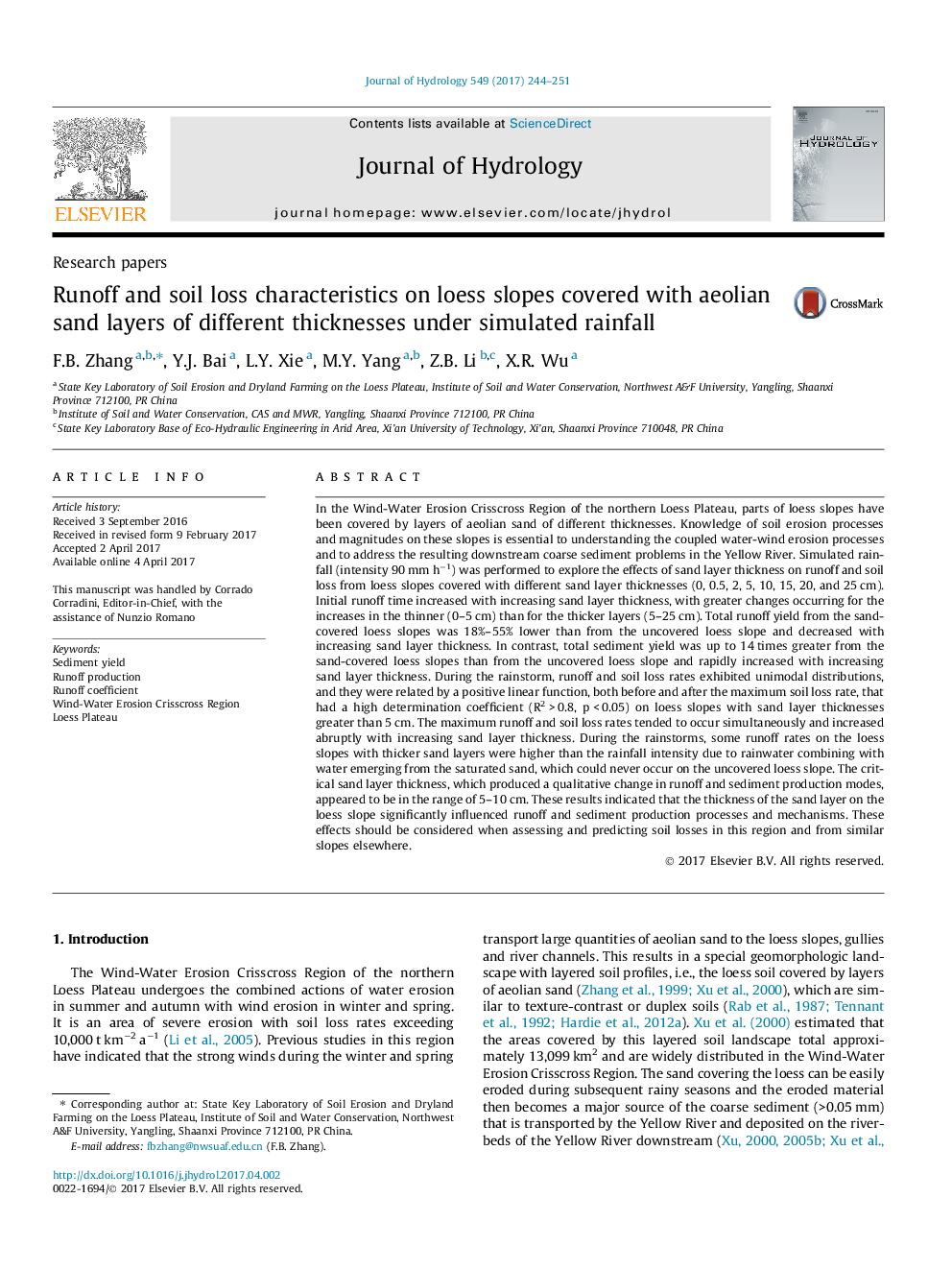| کد مقاله | کد نشریه | سال انتشار | مقاله انگلیسی | نسخه تمام متن |
|---|---|---|---|---|
| 5770980 | 1629905 | 2017 | 8 صفحه PDF | دانلود رایگان |
- Aeolian sand deposited over loess form a special type of texture-contrast soil.
- Sand thickness affects runoff and sediment production on sand-covered loess slopes.
- Runoff and soil loss vary notably with increasing sand thickness during a storm.
- Runoff coefficient can be more than 1 on sand-covered loess slopes during a storm.
- Runoff and soil loss peaks are almost concurrent on slope with thicker sand layers.
In the Wind-Water Erosion Crisscross Region of the northern Loess Plateau, parts of loess slopes have been covered by layers of aeolian sand of different thicknesses. Knowledge of soil erosion processes and magnitudes on these slopes is essential to understanding the coupled water-wind erosion processes and to address the resulting downstream coarse sediment problems in the Yellow River. Simulated rainfall (intensity 90 mm hâ1) was performed to explore the effects of sand layer thickness on runoff and soil loss from loess slopes covered with different sand layer thicknesses (0, 0.5, 2, 5, 10, 15, 20, and 25 cm). Initial runoff time increased with increasing sand layer thickness, with greater changes occurring for the increases in the thinner (0-5 cm) than for the thicker layers (5-25 cm). Total runoff yield from the sand-covered loess slopes was 18%-55% lower than from the uncovered loess slope and decreased with increasing sand layer thickness. In contrast, total sediment yield was up to 14 times greater from the sand-covered loess slopes than from the uncovered loess slope and rapidly increased with increasing sand layer thickness. During the rainstorm, runoff and soil loss rates exhibited unimodal distributions, and they were related by a positive linear function, both before and after the maximum soil loss rate, that had a high determination coefficient (R2 > 0.8, p < 0.05) on loess slopes with sand layer thicknesses greater than 5 cm. The maximum runoff and soil loss rates tended to occur simultaneously and increased abruptly with increasing sand layer thickness. During the rainstorms, some runoff rates on the loess slopes with thicker sand layers were higher than the rainfall intensity due to rainwater combining with water emerging from the saturated sand, which could never occur on the uncovered loess slope. The critical sand layer thickness, which produced a qualitative change in runoff and sediment production modes, appeared to be in the range of 5-10 cm. These results indicated that the thickness of the sand layer on the loess slope significantly influenced runoff and sediment production processes and mechanisms. These effects should be considered when assessing and predicting soil losses in this region and from similar slopes elsewhere.
Journal: Journal of Hydrology - Volume 549, June 2017, Pages 244-251
